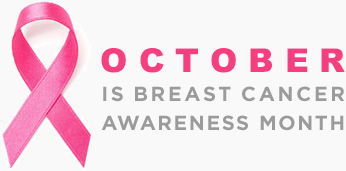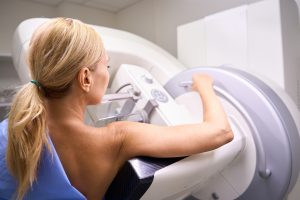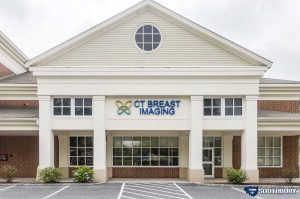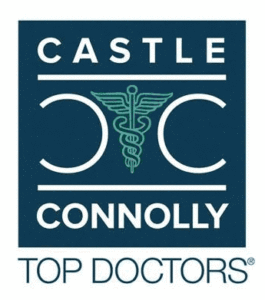Brought to you by Connecticut Breast Imaging
Regular breast self-examinations can detect abnormalities, and mammograms can provide images that detect breast tissue changes. This is why regular mammography screenings are recommended for all women starting at age 40. While these tests are the most effective ways to discover disease early, breast cancer doesn’t always begin as a lump, and mammograms cannot detect all breast tumors. There are a number of uncommon signs of breast cancer that everyone should know about.
The 5 Warning Signs of Breast Cancer
While some people do not have any early symptoms, early detection is critical as most people who learn about it early are able to receive successful treatments.Here are 5 warning signs that you might have breast cancer:
- A new lump in your breast or underarm (armpit): Lumps are the most common and noticeable warning signs of breast cancer. Very small lumps, that cannot be seen or felt by the naked eye, are only detected by a radiologist during a mammogram.
- Swelling or a lump under the arm or near the collarbone: this symptom could mean there is some spread of abnormal cells/tissue to lymph nodes (which are bean-shaped clusters of cells that are part of your immune system and help fight off infections). Any swelling or unusual lumps may indicate lymph node invasion. Swelling is typically noticed before a lump is discovered.
- Increase in size, shape, or feel of the breast.
- Change in the feel or look of the nipple.
- Swelling, redness, or darkening of the surface of your breast.
What is the first sign of breast cancer?
People often ask this question. How does one figure out they have breast cancer? What are the obvious first signs? How do you detect breast cancer in its early stages? How do you detect it before it is too late Well, the first ‘noticeable’ sign of breast cancer is the development of lumps in your breasts. Lumps are localized bulges, bumps, swelling, or protuberances that feel different from the breast tissue around them. Not all lumps are signs of cancer. In fact, most lumps are benign and are symptoms of other conditions such as infections, cysts, fibroadenomas, or fat necrosis. However, just to be certain, if you start noticing lumps in your breasts it is highly recommended that you see a medical professional immediately.Can You Have Breast Cancer And Not Know It?
Breast cancer symptoms are very hard to detect in the early stages. Hence, it may be difficult for someone who does not go for regular checkups to know when they have actual symptoms. Recently, on social media, a woman courageously announced that she had no idea she had breast cancer even after noticing a dimple on her breast. “I mean, it was just a dimple,” she said. This is why we advise everyone to have routine mammogram examinations so any abnormalities can be seen and addressed promptly.What Are Unusual Signs of Breast Cancer?
Breast cancer can happen to anyone and the symptoms, which may come on quickly or gradually, can vary depending on the type of breast cancer. Some types of breast cancer include invasive breast cancer, non-invasive breast cancer, inflammatory breast cancer, metastatic breast cancer, and phyllodes tumor, among others. Here are some unusual or uncommon signs of breast cancer to be aware of:- Flakey or red nipples: Flaky skin can either appear on the areola, or on the nipple itself. It can be caused by rough clothing, tight bras, etc., or can be symptoms of skin conditions like eczema. If skin remedies do not fix the flakiness, then you should seek an evaluation by your physician.
- Nipple discharge: If you are experiencing nipple discharge that’s clear, brown, yellow, or red (blood), you should get that checked immediately. Nipple discharge that is not caused by squeezing the nipple and occurs only in one breast, or as a result of breastfeeding needs evaluation.
- Flattened/ pulled inward or inverted nipples: If you notice that the shape of your nipple changes – pulling inward towards your chest, turning, or appears flattened – this could be a sign of breast cancer. Nipples can change shape as a result of pregnancy, temperature, arousal, etc., but it is always best to seek an evaluation. Other nipple changes may include redness, constant pain, itching, sores, or a burning sensation.
- Breast changes (color, shape): Just like the nipple, if you start to notice any changes to your breast such as the color turning reddish or pinkish that may be a warning sign. Also, if you notice indents, contours, or the size-changing after your period, seek evaluation. Other breast changes to watch out for include swelling, skin irritation, itching, flaky skin, rashes, etc.
- Thickness of surface area: If you notice parts of your breast become thicker or more ‘squishy’ it may be an early sign of cancer. The thickening could either be on the surface of the skin or inside the breast and may be caused by cancer cells blocking circulation in the breast.
- Dimpled areas on the breast: If you start to see any signs of dimples on the skin around the breast, it may be an early sign of cancer. A dimple can actually be caused if you wear clothes that are too tight. However, those dimples (or indents) caused by tight clothing will go away; if they don’t then it may need evaluation. Sometimes the dimples can be felt, other times they can’t.
Pro tip: a good way to check for signs of indentation is by lifting your arms above your head to see all of the skin of your breast move with your arms.
- Growing or enlarged veins are one of the very unusual and rare symptoms that we see. If veins around the breast or collarbone become more pronounced it could be a breast cancer tumor drawing more blood to itself.
- Any persistent general pain and tenderness in the breast and non-healing sores may be warning signs.
As these symptoms are often difficult to recognize, we advise that everyone get a regular mammogram.
